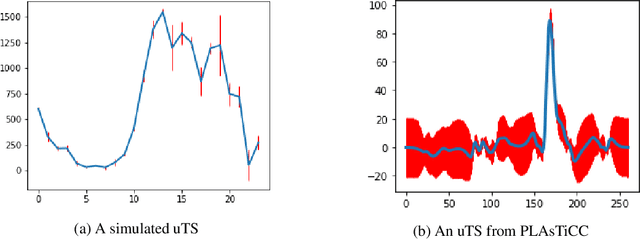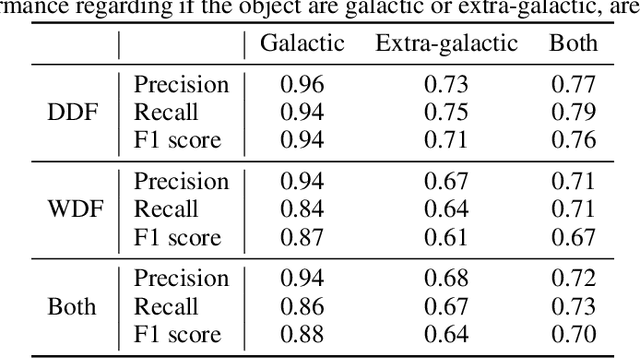Emmanuel Gangler
LPC, UCA
What ZTF Saw Where Rubin Looked: Anomaly Hunting in DR23
Jul 08, 2025Abstract:We present results from the SNAD VIII Workshop, during which we conducted the first systematic anomaly search in the ZTF fields also observed by LSSTComCam during Rubin Scientific Pipeline commissioning. Using the PineForest active anomaly detection algorithm, we analysed four selected fields (two galactic and two extragalactic) and visually inspected 400 candidates. As a result, we discovered six previously uncatalogued variable stars, including RS~CVn, BY Draconis, ellipsoidal, and solar-type variables, and refined classifications and periods for six known objects. These results demonstrate the effectiveness of the SNAD anomaly detection pipeline and provide a preview of the discovery potential in the upcoming LSST data.
Exploring the Universe with SNAD: Anomaly Detection in Astronomy
Oct 24, 2024Abstract:SNAD is an international project with a primary focus on detecting astronomical anomalies within large-scale surveys, using active learning and other machine learning algorithms. The work carried out by SNAD not only contributes to the discovery and classification of various astronomical phenomena but also enhances our understanding and implementation of machine learning techniques within the field of astrophysics. This paper provides a review of the SNAD project and summarizes the advancements and achievements made by the team over several years.
* 14 pages, 4 figures
Multi-View Symbolic Regression
Feb 16, 2024



Abstract:Symbolic regression (SR) searches for analytical expressions representing the relationship between a set of explanatory and response variables. Current SR methods assume a single dataset extracted from a single experiment. Nevertheless, frequently, the researcher is confronted with multiple sets of results obtained from experiments conducted with different setups. Traditional SR methods may fail to find the underlying expression since the parameters of each experiment can be different. In this work we present Multi-View Symbolic Regression (MvSR), which takes into account multiple datasets simultaneously, mimicking experimental environments, and outputs a general parametric solution. This approach fits the evaluated expression to each independent dataset and returns a parametric family of functions f(x; \theta) simultaneously capable of accurately fitting all datasets. We demonstrate the effectiveness of MvSR using data generated from known expressions, as well as real-world data from astronomy, chemistry and economy, for which an a priori analytical expression is not available. Results show that MvSR obtains the correct expression more frequently and is robust to hyperparameters change. In real-world data, it is able to grasp the group behaviour, recovering known expressions from the literature as well as promising alternatives, thus enabling the use SR to a large range of experimental scenarios.
Explainable classification of astronomical uncertain time series
Sep 28, 2022



Abstract:Exploring the expansion history of the universe, understanding its evolutionary stages, and predicting its future evolution are important goals in astrophysics. Today, machine learning tools are used to help achieving these goals by analyzing transient sources, which are modeled as uncertain time series. Although black-box methods achieve appreciable performance, existing interpretable time series methods failed to obtain acceptable performance for this type of data. Furthermore, data uncertainty is rarely taken into account in these methods. In this work, we propose an uncertaintyaware subsequence based model which achieves a classification comparable to that of state-of-the-art methods. Unlike conformal learning which estimates model uncertainty on predictions, our method takes data uncertainty as additional input. Moreover, our approach is explainable-by-design, giving domain experts the ability to inspect the model and explain its predictions. The explainability of the proposed method has also the potential to inspire new developments in theoretical astrophysics modeling by suggesting important subsequences which depict details of light curve shapes. The dataset, the source code of our experiment, and the results are made available on a public repository.
 Add to Chrome
Add to Chrome Add to Firefox
Add to Firefox Add to Edge
Add to Edge